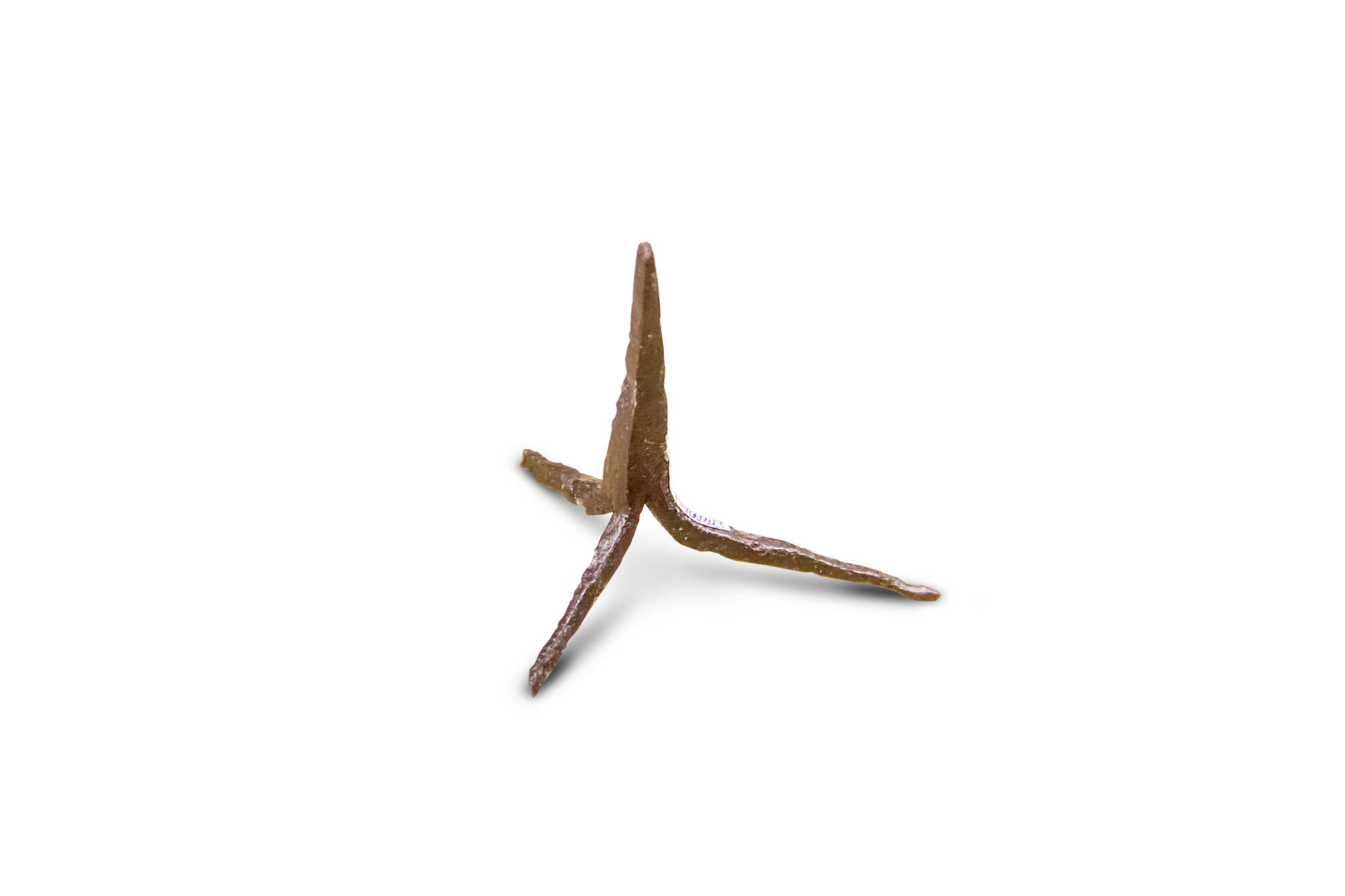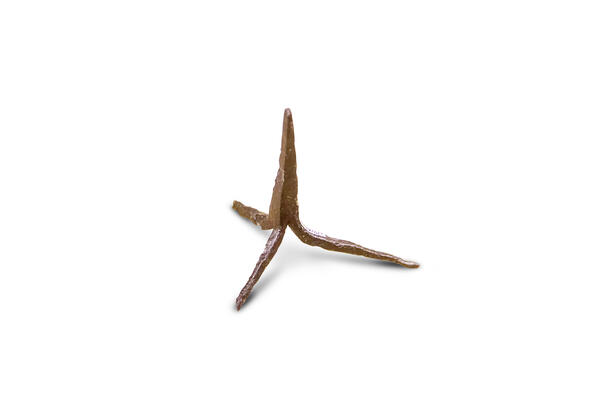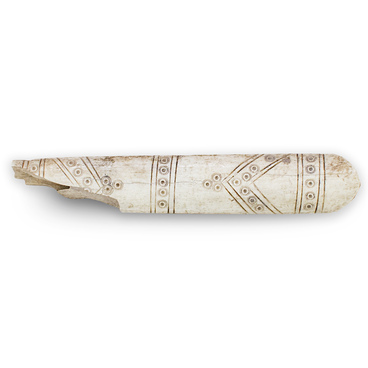Cheval-defrise is a defensive weapon used against enemy cavalry. Its base was made up of three spikes pointed in three different directions. This weapon served as a support for the main hitting spike made in the form of a horn (‘horn’ is translated into Russian as ‘rog’), therefore, it was called the ‘rogatka’ (cheval-defrise). It was used by different peoples and not only to stem the enemy’s cavalry attack. The cheval-defrise was effective even against war elephants and camels.
Researchers suggest that for the first time ever the cheval-defrise could have been employed in the 5th century BC. Similar bone items of this period were discovered during excavations in Crimea. Such weapons are referenced in the works of Polienus, the ancient Greek writer. According to him, Persians studded the area with iron spikes to neutralize the cavalry of Alexander the Great during the Gaugamela battle in 331 BC.
In Russia, the cheval-defrise appeared much later. Some scientists stated that first-ever it was used against nomads at the beginning of the 2nd millennium AD. The other suggests that the cheval-defrise appeared for centuries later and came from the Far East, with the help thereof Chinese troops attacks were combated. In Russia, the cheval-defrise was called “chesnok” (a caltrop). The name “chesnok” is a corrupt derivative of the word “chastik”, which meant an obstacle made of sharpened timber picket rows.
A caltrop was used on different surfaces, except for loose deep snow or swamps, where support spikes could be drowned. One or three cheval-defrises per square meter were installed for defense. Therewith depending on the chosen tactics, such an obstacle could be up to 150 meters wide.
The height of the caltrop’s striking spike was no more than 5-6 centimeters. It was invisible in the grass or in the snow. A horse that stepped on the caltrop most commonly fell, dragging the cavalryman along. The animal remained lame after such an injury and failed to participate in further battles anymore. The horses even worse often died from blood poisoning.
A cheval-defrise from the Bolgar Museum-Reserve collection was made in the 10th-13th century. Back at the time, the Bolgar blacksmiths already had mastered steel melting technology, as well as its quench-hardening. For the product quench-hardening, it was first white heated and then immersed in cold water. Thus, the material hardness became higher. The Volga Bolgars tempered spearheads, arrowheads, combat knives, and anti-cavalry cheval-defrises.
Researchers suggest that for the first time ever the cheval-defrise could have been employed in the 5th century BC. Similar bone items of this period were discovered during excavations in Crimea. Such weapons are referenced in the works of Polienus, the ancient Greek writer. According to him, Persians studded the area with iron spikes to neutralize the cavalry of Alexander the Great during the Gaugamela battle in 331 BC.
In Russia, the cheval-defrise appeared much later. Some scientists stated that first-ever it was used against nomads at the beginning of the 2nd millennium AD. The other suggests that the cheval-defrise appeared for centuries later and came from the Far East, with the help thereof Chinese troops attacks were combated. In Russia, the cheval-defrise was called “chesnok” (a caltrop). The name “chesnok” is a corrupt derivative of the word “chastik”, which meant an obstacle made of sharpened timber picket rows.
A caltrop was used on different surfaces, except for loose deep snow or swamps, where support spikes could be drowned. One or three cheval-defrises per square meter were installed for defense. Therewith depending on the chosen tactics, such an obstacle could be up to 150 meters wide.
The height of the caltrop’s striking spike was no more than 5-6 centimeters. It was invisible in the grass or in the snow. A horse that stepped on the caltrop most commonly fell, dragging the cavalryman along. The animal remained lame after such an injury and failed to participate in further battles anymore. The horses even worse often died from blood poisoning.
A cheval-defrise from the Bolgar Museum-Reserve collection was made in the 10th-13th century. Back at the time, the Bolgar blacksmiths already had mastered steel melting technology, as well as its quench-hardening. For the product quench-hardening, it was first white heated and then immersed in cold water. Thus, the material hardness became higher. The Volga Bolgars tempered spearheads, arrowheads, combat knives, and anti-cavalry cheval-defrises.



